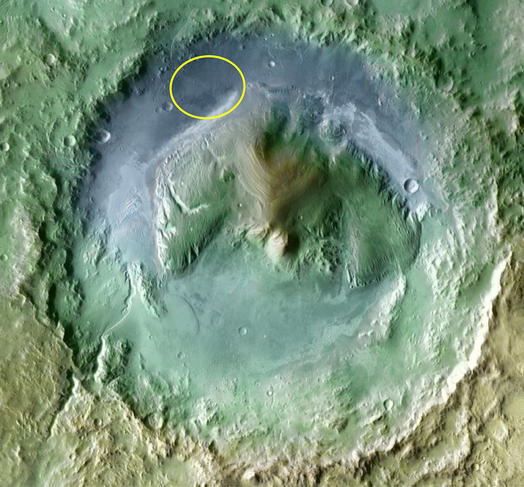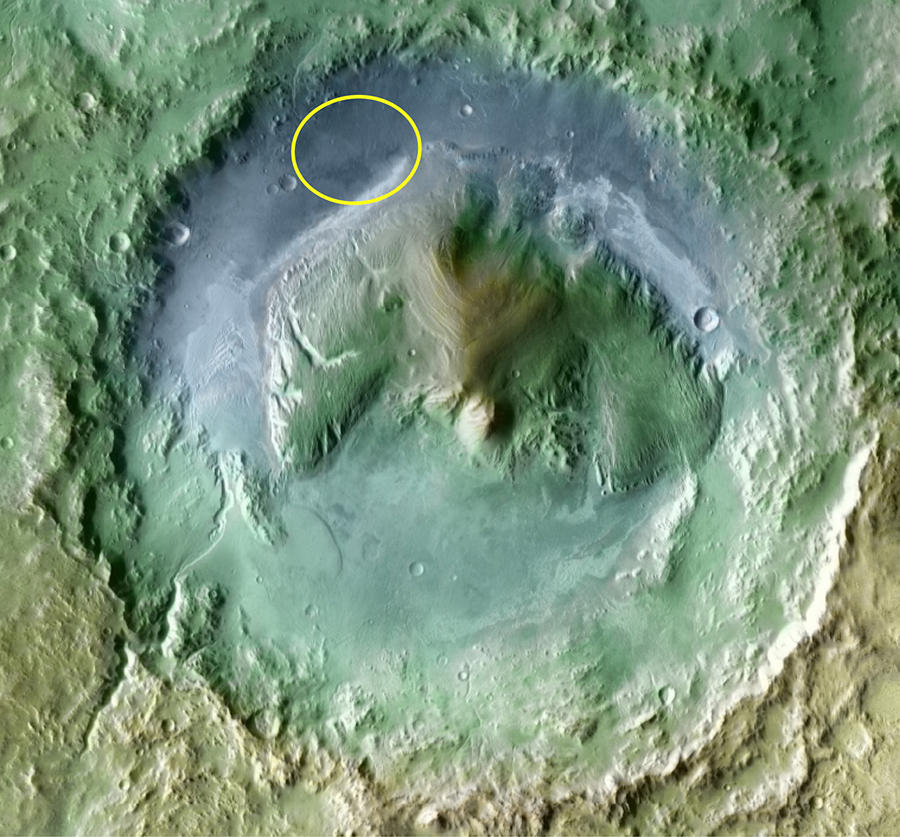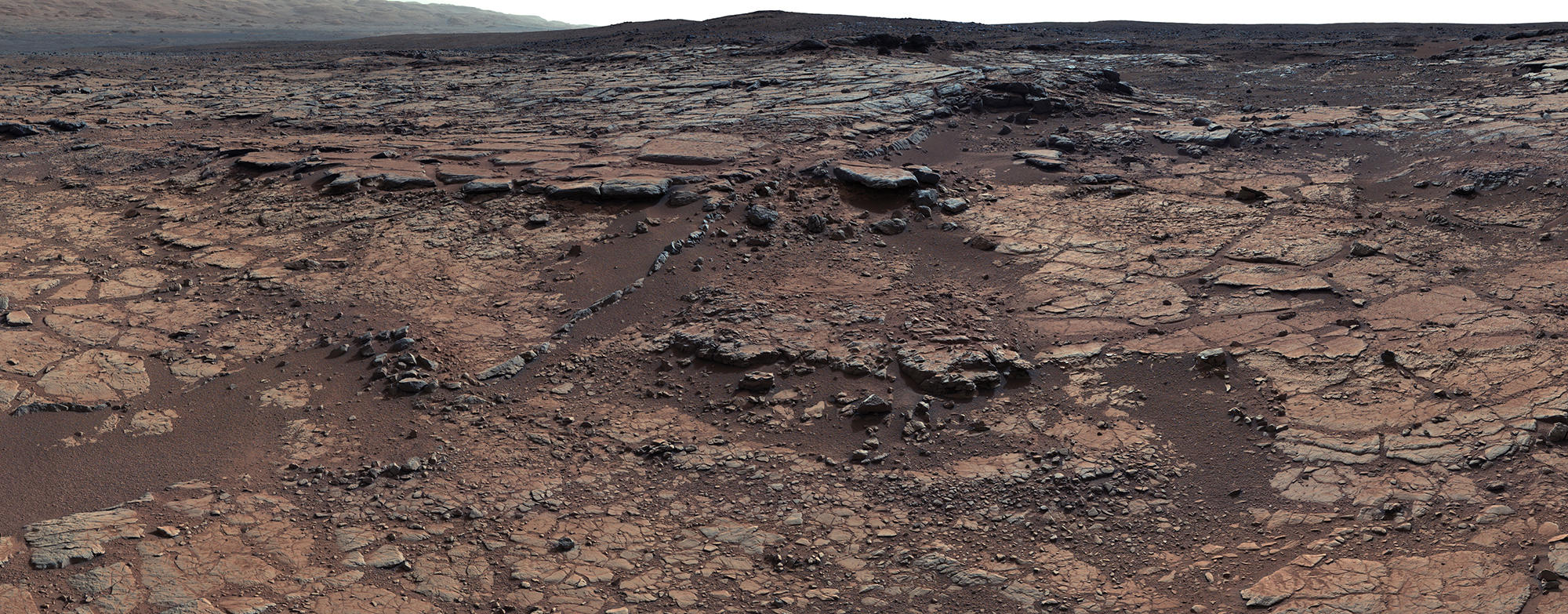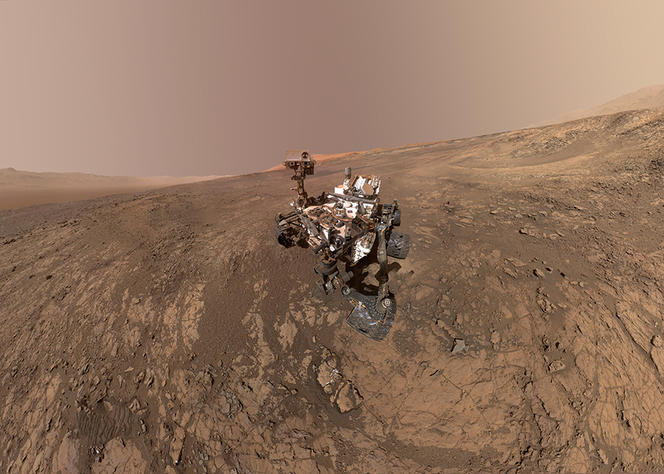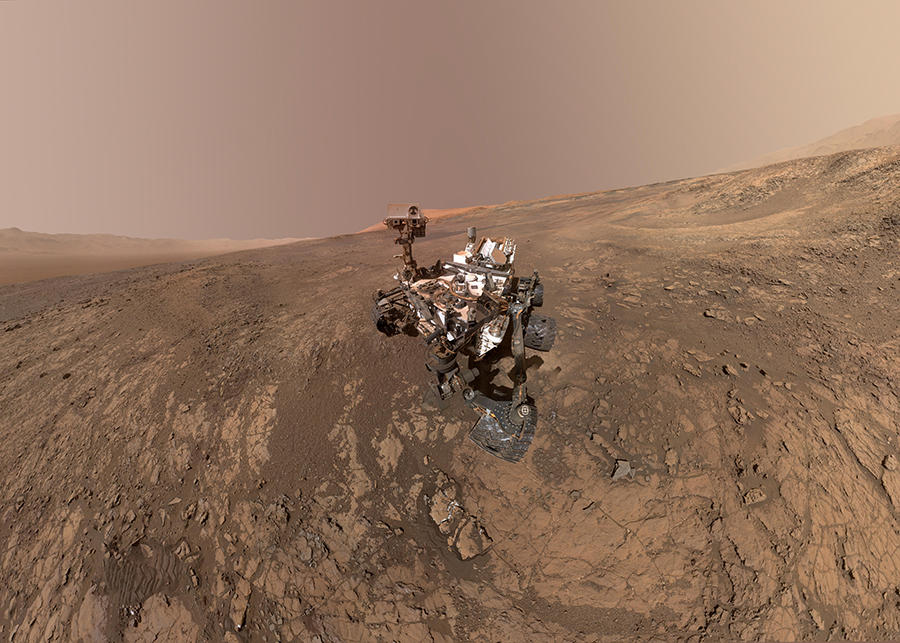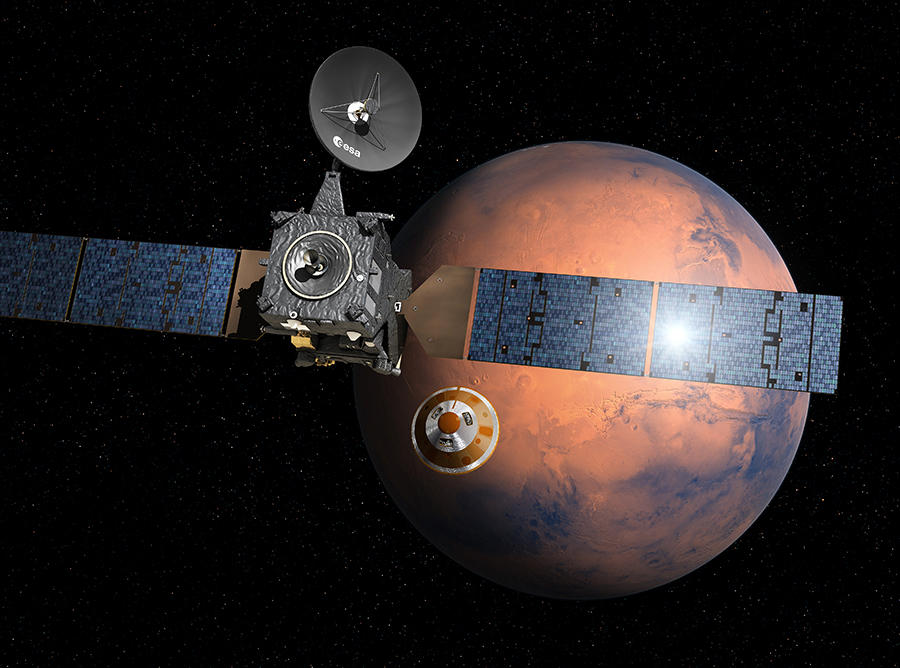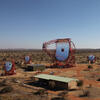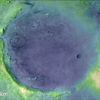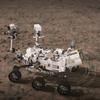You are here
Two rovers in search of signs of life on Mars
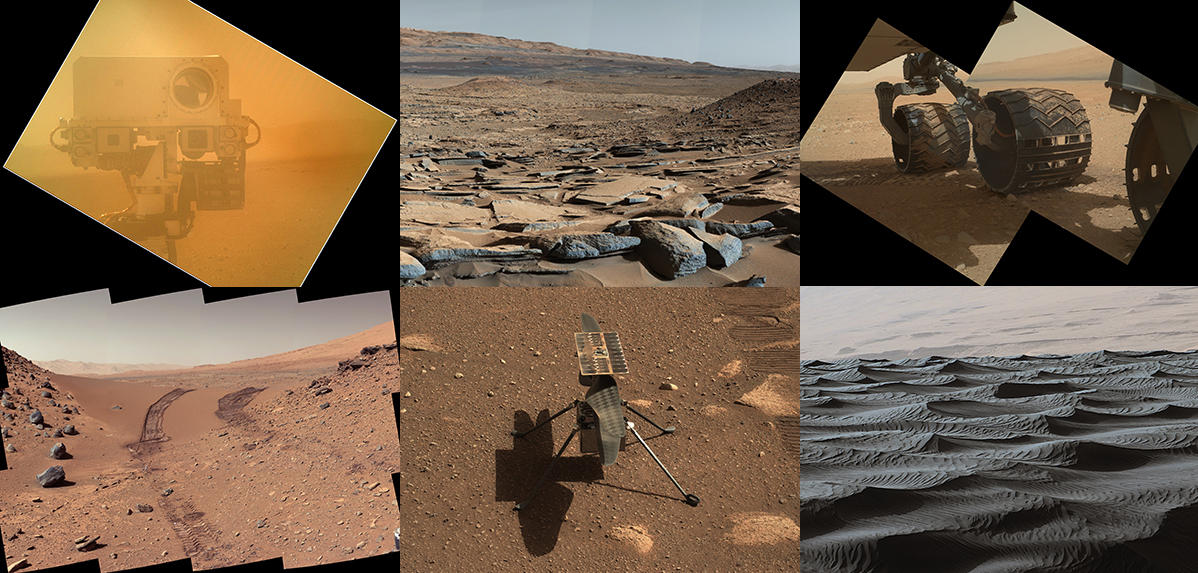
As far as the eye can see, Mars is today an arid, sun-drenched desert. A desolate, waterless land, hostile to life. And yet, planetary scientists are convinced that, in its early days, the Red Planet evolved in a similar way to Earth, so much so that, for several hundred million years, it may have provided favourable conditions for the emergence and development of life. What's more, Earth's sister planet is devoid of plate tectonics and less affected by erosion. This means that there is a real possibility that traces of this distant past, corresponding to the period when life first appeared on Earth, still remain in Martian sediments, unlike on our own planet where geological processes have mostly obliterated them.
Cutting-edge instruments to collect and analyse samples
In other words, despite the barren surface it exhibits today, Mars not only provides us with a fantastic laboratory for comparative planetary science, but may even harbour the secret of our own origins. In an attempt to find out, the Curiosity rover has been exploring the Martian surface for the past ten years. In 2021, it was joined by its alter ego Perseverance, whose latest results have just been published. In the space of a decade, the two rovers, remotely controlled from Earth, have made a major contribution to renewing our vision of Mars. Curiosity, designed by NASA's Jet Propulsion Laboratory (JPL) is a mobile laboratory equipped to answer one simple question: if life did appear on Mars in its infancy, would it have been able to survive? For that purpose, the rover, which weighs nearly a tonne, carries ten complementary scientific instruments, in two of which France played a significant role. The first one, ChemCam, carries out elemental analysis of rocks and soils at distances of up to a few metres. It uses its laser to vaporise a small amount of material and then takes spectroscopic readings of the light emitted. The second one, SAM, is a miniature physics and chemistry lab that analyses gases sampled from the atmosphere and those released by heating the soil and rock samples collected by the rover.



As for Perseverance, its basic mission is to continue geological exploration and gather around forty samples that will later be brought back to Earth for detailed analysis. The goal is to determine whether or not Martian rocks contain records of past life. We won't know the answer until the middle of the next decade when the samples are returned. In the meantime, NASA's rover can count on the assistance of the French-American instrument SuperCam to characterise the context in which its samples are collected. On the French side, SuperCam was developed under the responsibility of the French space agency, CNES, with Sylvestre Maurice, an astronomer at the IRAP,1 as deputy principal investigator. Like ChemCam, SuperCam uses laser-induced breakdown spectroscopy, which provides information about the elemental composition of rocks and soils, as well as Raman and infrared spectroscopy, which are used to determine the nature of the minerals targeted and their degree of hydration.
Possible microbial life around 3.6 billion years ago
Curiosity landed near Mars’ equator in August 2012, specifically on the floor of Gale Crater, and immediately swung into operation, following a programme whose instructions were sent on a daily basis from Earth, and in which French scientists participated as part of a close collaboration between the CNES and JPL. As the rover carried out its first exploration of the site of Yellowknife Bay, a depression covered with sediments exposed by erosion, it observed pebbles whose shape indicated that they had been rolled along in water. For the scientists, it was clear that the rover was travelling along the bed of an ancient river that had flowed for thousands or even millions of years.
Curiosity's battery of scientific instruments then went into action. The analysis revealed that the sediments had originated in a lake, and that the minerals they contained had formed in relatively fresh water with a neutral pH. Moreover, carbon, hydrogen, nitrogen, oxygen, phosphorus and sulfur, in other words all the basic building blocks of life, were present. What’s more, some of the minerals detected could have been used by microorganisms as a source of energy. This left no room for doubt: some 3.6 billion years ago, the Martian environment would have been habitable by any hypothetical microorganisms.

The rest of the mission went on to confirm this. Cyril Szopa at the Atmospheres, Space Observations Laboratory (LATMOS)2 recounts: “Since Curiosity landed on Mars ten years ago, it has travelled 28 kilometres and ascended 600 metres. Wherever we’ve collected and analysed soil samples, over thirty in all, we have found possible traces of organic matter, as well as inorganic compounds used by living organisms on Earth, such as nitrates. They're everywhere! So the habitable zone, initially limited to Yellowknife Bay, could actually extend to the whole of Gale Crater, supporting the hypothesis of an ancient Mars covered with lakes.” The scientists have also recently re-examined the data from SAM recorded at Yellowknife Bay. The result, announced at several conferences, was the surprising discovery of breakdown products of carboxylic acids, which are the basic components of cell membranes.
Clues to climate history
After exploring the floor of Gale Crater, Curiosity then started to climb Mount Sharp (Aeolis Mons), which lies at its centre. As it gained altitude, the rover was able to study the sequence of sedimentary beds stacked one on top of another, thus gaining access to an entire chunk of Mars’ history. “After observing clay-rich sediments, the rover is now in what we call the transition zone, where the rocks grade upwards into beds rich in sulfates,” says Olivier Gasnault, a researcher at the IRAP and deputy principal investigator of ChemCam. “This transition is probably evidence of the change in climate which, around 3 billion years ago, saw the planet shift from humid conditions to the barren desert it has become.”
So how exactly did this happen? This is the question that specialists will be focusing on now that the rover's mission has been extended until 2025 by NASA and its partners. For now, the images show a pattern of thin, alternating brittle and resistant beds, typical of deposits in a river floodplain. “This may be a sign that, during the transition period, the climate swung between wet and dry periods, or that they co-existed,” says Gasnault, who is also responsible for SuperCam’s imaging instruments. “Either way, this further widens the window of habitability, which at this site probably lasted for millions of years on the crater floor, or even hundreds of millions of years beneath the surface.” The investigation continues.
Intriguing geological and atmospheric data
At the same time, extensive information has been gathered about Martian geology and the way it works today. The most spectacular discovery was published in 2015, after planetary scientists observed paler, differentiated rocks, typical of those that make up Earth's continental crust. On Earth, such rocks are derived from primitive basalts – those that form the ocean floor – buried by subduction, melted, and then brought back to the surface by volcanism associated with plate tectonics. Their presence on Mars is hard to explain, since the planet clearly appears to have no tectonics of this type. For the moment, this remains a mystery.
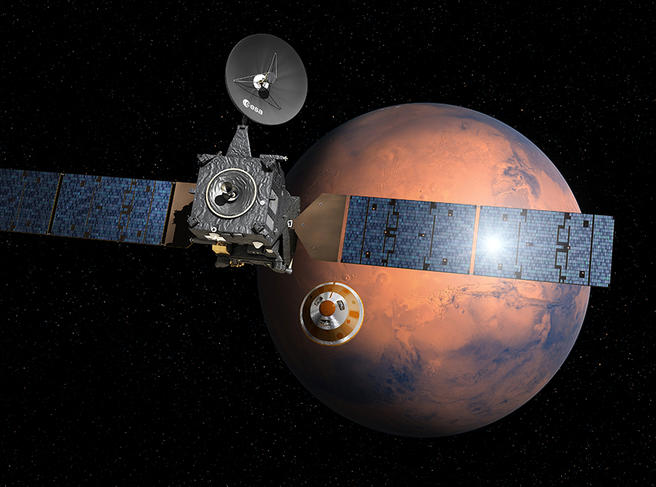
As do the contradictory measurements made by Curiosity on the one hand and the TGO orbiter on the other, concerning the presence or otherwise of methane in the Martian atmosphere. While the rover has detected variable concentrations of methane depending on the seasons and the day/night cycle, as well as peaks in concentration at certain times, the TGO found no trace of the gas in the Martian atmosphere. As Szopa explains, “For the Curiosity team, the goal is to understand the origin of this gas. On Earth, methane is partly biotic, whereas on Mars it may result from the interaction of subsurface rocks with water in underground aquifers that melts in summer. Conversely, the TGO collaboration has come to the conclusion that our measurements are incompatible with those made by the orbiter and with what we know about the physics and chemistry of the atmosphere!” It will be interesting to see how this plays out during the extension phase of the mission.
Evidence for the former presence of liquid water
Meanwhile, Perseverance, which has been in operation for nearly two years, continues to collect data following the instructions issued daily by the controllers at the JPL, in conjunction with their French counterparts. One thing is certain: the planetary scientists' decision to land the rover in Jezero Crater was spot on. With an age of just under 4 billion years, the crater is slightly older than Gale, and the terrain is typical of a time when liquid water must have been at its most abundant on Mars. “This is especially interesting since it was during this period that life first appeared on Earth,” points out Cathy Quantin-Nataf, a geologist at the LGL-TPE,3 and co-investigator for SuperCam. Moreover, images taken from space have revealed what specialists interpret as a river delta, “in other words, a place where material accumulates and where you would expect a large amount of organic matter to be buried and well preserved”, she adds.
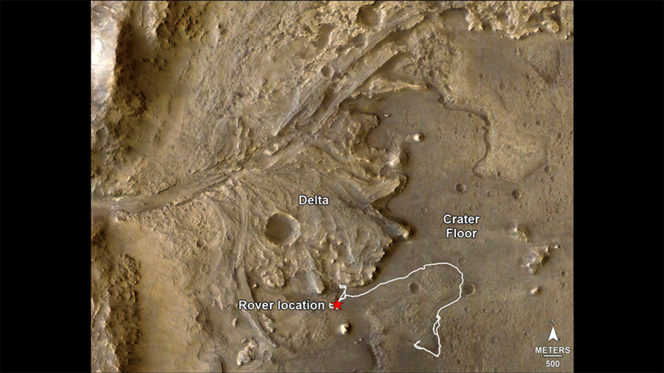


As luck would have it, Perseverance's first observations, published last year, confirmed that the rover was in the vicinity of an ancient circular lake several tens of metres deep, fed by rivers that had formed a vast delta. “From the images of the sediments on Kodiak Hill we could clearly see sedimentary beds typical of an ancient delta, as well as large rounded boulders nearly a metre in diameter, evidence of cataclysmic floods that probably occurred in the later stages of the lake’s life,” explains Olivier Beyssac, a researcher at the IMPMC4 and a co-investigator for SuperCam. This all boded extremely well for the upcoming collection of samples.
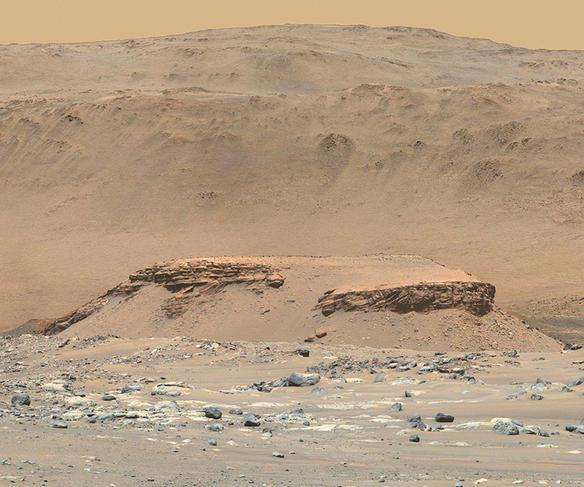

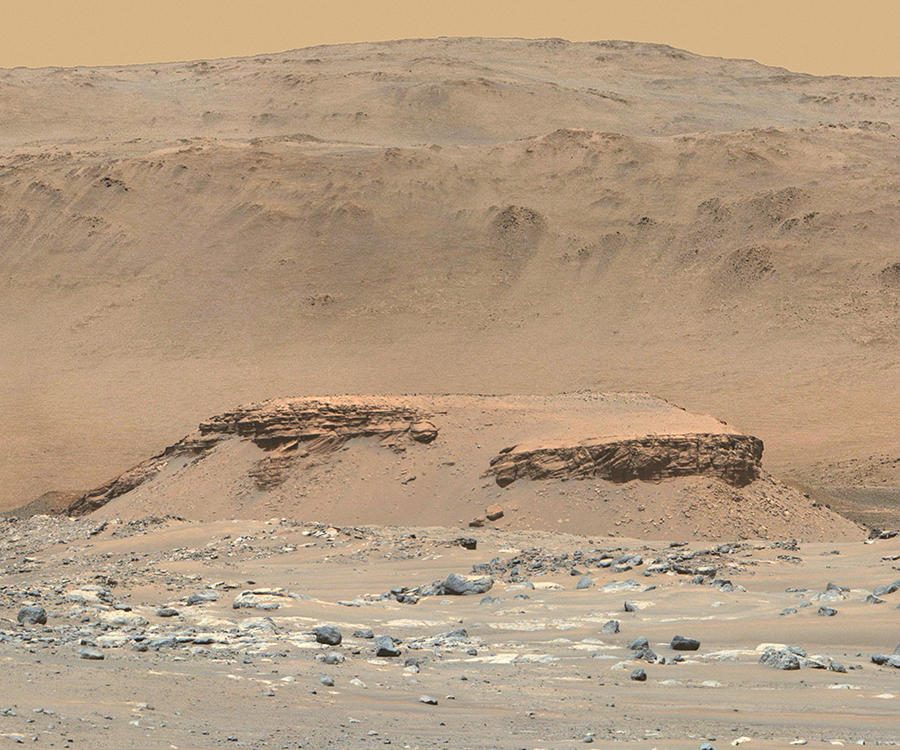
And indeed the researchers’ hopes were met. “Almost two years into the mission, the sampling of the crater floor is complete, that of the delta is under way, and we will then explore the crater rim, where we expect to find carbonates typical of lake sediments,” Quantin-Nataf explains. “This will complete the nominal mission, which is scheduled to end in 2023.” In a few weeks' time, and with the organisers already counting on the operation being extended, Perseverance will deposit half of the pairs of samples so far collected on the surface of Mars before continuing its journey. This will ensure that, even if something unexpected happens to the rover, at least some of its precious cargo can be retrieved.
Igneous rocks on the floor of Jezero Crater
For the experts, some of the rocks already analysed in situ have turned out to be a surprise. A paper published at the end of August based on data from all of Perseverance's instruments, revealed the presence of igneous rocks on the crater floor. These include not only basaltic rocks derived from lava flows but also coarsely crystalline rocks rich in olivine. According to Beyssac, “while the former are not surprising, on Earth, an olivine cumulate of this type forms at depth before being exposed at the surface by tectonic processes and erosion. But on Mars, we don't yet have a global scenario that can explain their presence on the crater floor”. As Quantin-Nataf explains, only one thing is certain: “We believe that these rocks predate the formation of the lake, and that the salt incrustations in their porosities were probably caused by the evaporation of water on the crater floor.”



To find out for sure, the researchers will just have to be patient: the two missions to bring back the rocks are scheduled to launch in 2026, and the samples are not expected to be delivered to the labs until 2033 at the earliest. Only then will they be able to write another page in the unfolding history of Mars.
- 1. Institut de Recherche en Astrophysique et Planétologie (CNRS / CNES / Université Toulouse III - Paul Sabatier).
- 2. CNRS / Sorbonne Université / UVSQ.
- 3. Laboratoire de géologie de Lyon : Terre, Planètes, Environnement (CNRS / ENS Lyon / Université Claude Bernard Lyon 1).
- 4. Institut de Minéralogie, de physique des matériaux et de cosmochimie (CNRS / MNHN / Sorbonne Université).


